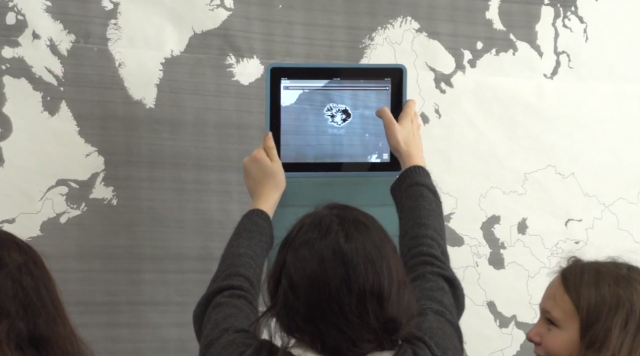
When many of today’s teachers who grew up in Generation X are asked to reflect on traditional learning objects from their classrooms of the 1980’s and 1990’s, they think of paper, pencils, chalkboards, and textbooks. When they're shown a series of pictures of those classroom’s from the '70s, '80s, and '90s, and asked to describe them, they use adjectives like "utilitarian, boring, and two-dimensional."
The classrooms in which Millennials and Generation Z learn are a world apart from those of Baby Boomers and Generation X. In 2014, using augmented reality as a launching pad into discovery is becoming more common. Gone are the direct instructions of “sit down and be quiet” or “take out your textbooks and turn to page 21.” The modern classroom makes use of Augmented Reality to curate the web for this generation of digital natives. These days, students can walk into a classroom and use their tablet or smartphone as the AR device to trigger to original content made on movie-making software and posted to YouTube, leading to an immediate and immersive learning experience.
Even the sound of learning has changed in today's classrooms, from the vocal command of the teacher directing students toward the sound of students working together in groups, or listening to audio or visual content on their devices through their ear phones.
“Kids are actively doing rather than passively listening," says Jeff Gorman, Assistant Superintendent of Schools in Monroe Township, New Jersey, and a frequent observer of these forward-looking classrooms. "The question is no longer what did the teacher teach today, the question is now what interesting question did you explore in school. This indicates a shift in learning towards higher level thinking skills."

